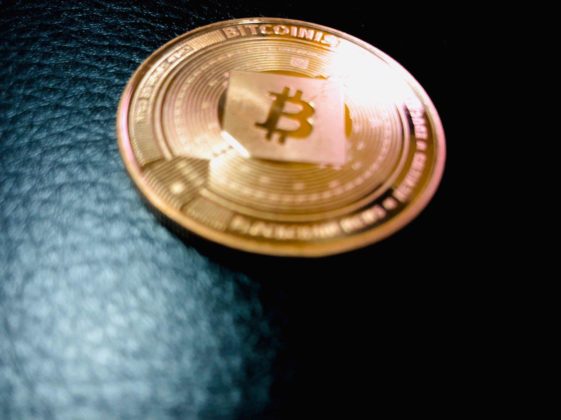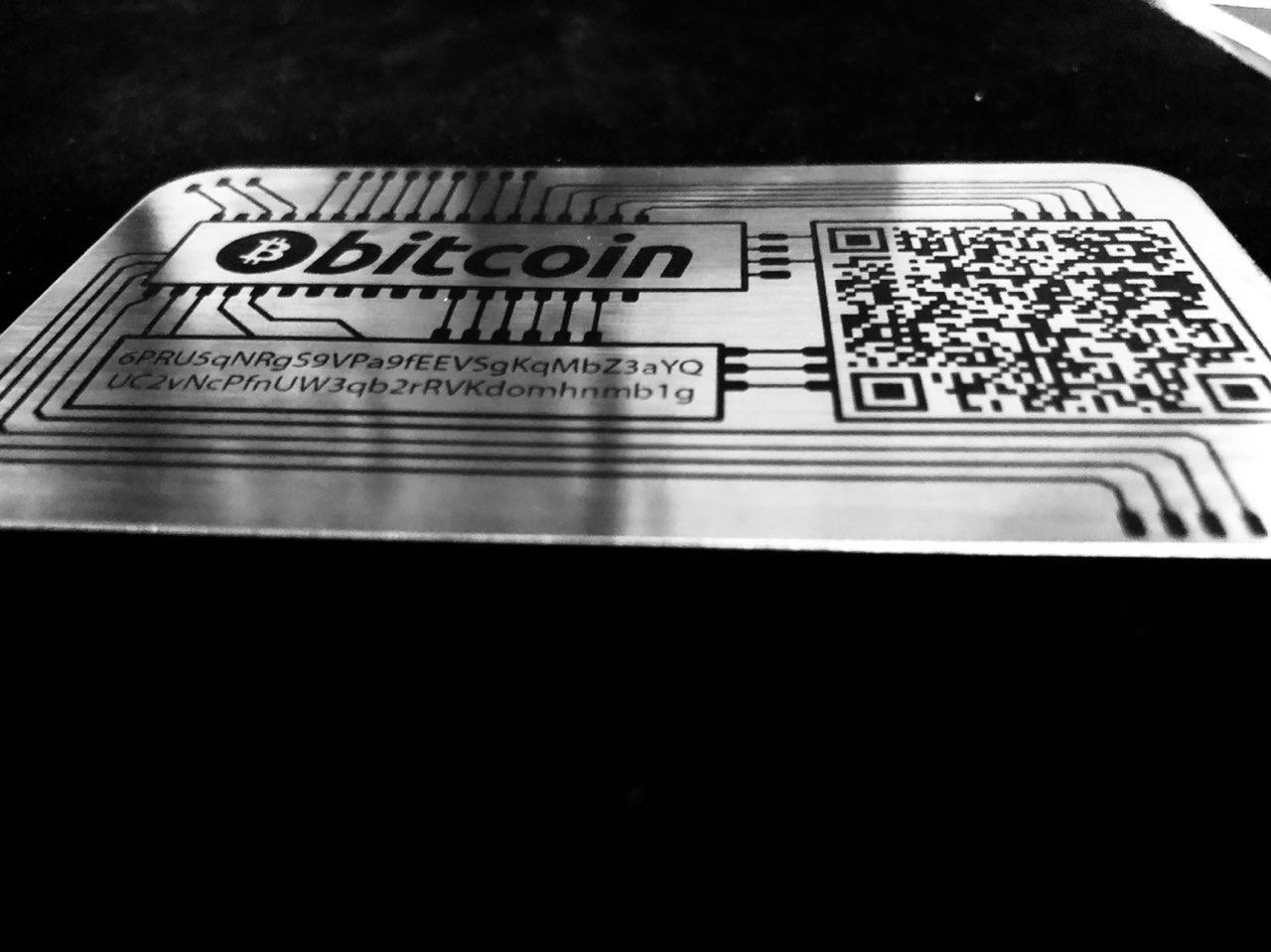
You’ve probably heard the word by now but you might still be wondering — what is Bitcoin? Well, there are no stupid questions here, so let’s start at the very beginning. What is Bitcoin? Who created it and what goes on under the hood?
What Is Bitcoin? A Distributed Peer-to-Peer Digital Currency
Simply put, Bitcoin is a distributed peer-to-peer digital currency. It can be transferred instantly and securely between any two people in the world who accept Bitcoin. It’s like digital cash in that you can send Bitcoin to any other Bitcoin user in the world. It’s a transfer of value just like traditional currencies. Unlike traditional currencies, however, Bitcoin only exists in digital form.
The world’s first cryptocurrency was released in 2009 as an open-source software, which means that anyone can examine the code and add to the Bitcoin network. Unlike traditional currencies again, Bitcoin is decentralized. You’ve probably heard that word a lot too, and it basically means that no central authorities (such as banks or political institutions) control the amount of Bitcoin in circulation.
How Does Bitcoin Work?
If that leaves you wondering how Bitcoin works with no one controlling it, we’re just getting started. The system at its purest level is simple and organized.
Bitcoin uses public-key cryptography and proof-of-work to process and verify payments. Bitcoins are sent (or signed over) from one Bitcoin address to another with each user potentially having many, many addresses.
Each payment transaction is broadcast to the network and included in the Bitcoin blockchain so that the included bitcoins cannot be spent twice. After an hour or two, each transaction is locked in time (i.e. in a block that is mined roughly every 10 minutes) by the massive amount of processing power that continues to extend the blockchain.
Unlike fiat currencies, with no government to print new currency, the Bitcoin blockchain controls how many Bitcoin are produced. The total supply of Bitcoin to ever be created is capped at 21 million with about 17.3 million in circulation today.
With a hard cap set for the number of bitcoins ever to be mined, many people argue over how Bitcoin can scale for massive use.
However, what makes Bitcoin unique as a cryptocurrency unlike traditional currencies is that it is infinitesimally divisible. If you wanted to transfer just 0.00000001 bitcoins, you could, which makes the number of 21 million Bitcoins pretty much arbitrary.
What Is Blockchain?
At its core, the blockchain is a giant distributed ledger in which every Bitcoin transaction ever made is recorded and immutable. They cannot be changed, tampered with or reversed.
Each block is made up of data that is based on encrypted Merkle Trees which are used to detect any fraudulent transactions or corrupted files and expel them. This way, the blockchain ensures that all Bitcoin transactions are accurate and prevents any corrupt files from damaging the ledger.
The Bitcoin blockchain is a shared record of every transaction ever made on its digital accounting book. When person A sends Bitcoin to person B, this transaction is added to a public ledger. This ledger is stored in multiplicity throughout the network, and to update one is to update them all.
This public ledger contains the history of all past transactions. Meanwhile, Bitcoin miners confirm transactions to the rest of the network by including them in blocks.
Bitcoin nodes, on the other hand, which run Bitcoin software client and contain the entire copy of the blockchain, validate transactions based on the protocol.
How Does Bitcoin Solve the Double-Spending Problem?
Since Bitcoin is digital, it would be fairly easy to spend the same bitcoin twice right? Wrong. Bitcoin’s elements including blockchain, mining, proof of work, complexity, etc., exist to ensure that the transaction ledger is computationally impractical to modify. This is also known as “solving the double-spending problem.”
Bitcoin users protect themselves from double spending fraud by waiting for confirmations when receiving payments on the blockchain, the transactions become more irreversible as the number of confirmations rises.
Other electronic systems (e.g. PayPal) prevent double-spending by having a master authoritative source that follows business rules for authorizing each transaction.
How Is Bitcoin Decentralized?
As previously mentioned, Bitcoin uses a decentralized system, where a consensus among network nodes following the same protocol and Proof-of-Work is substituted for a central authority. This means that Bitcoin has special properties not shared by centralized systems.
For example, if you keep the private key of a bitcoin secret and the transaction has enough confirmations, then nobody can take the bitcoin from. Possession of bitcoin is not enforced by business rules and policy, but by cryptography and game theory.
Because bitcoin transactions can be final, merchants do not need to hassle customers for extra information like billing address, name, etc. This means that Bitcoin can be used without registering a real name or excluding users based on age, nationality or residency.
This anonymity has lead many naysayers to accuse bitcoin of being the payment method of choice of criminals, as it is impossible to trace the origins of the payment and there is no limit to the amount that can be sent, unlike a bank account which requires a justification of funds.
However, these accusations stand on thin ground based on the fact that all transactions are public on the blockchain and tracing people back through their Bitcoin address has been proven possible by federal agents.
Moreover, there are many more reports to suggest that the US dollar bill is by far the criminal’s currency of choice when it comes to money laundering and other nefarious deeds.
What Is Bitcoin Mining?

Bitcoin mining is the process of spending computational power to secure Bitcoin transactions against reversal and introducing new bitcoins to the system.
Bitcoin mining can be done by anyone possessing enough computing power to solve mathematical problems required by the system to confirm transactions while preventing double-spending. For their efforts, these miners are given a fee in the form of newly minted bitcoins.
A reward of 12.5 bitcoin is given to a miner for every block found or about 1,800 bitcoins per day. The number of bitcoins generated per block will decrease over time until a total of 21 million is reached. The next reward halving is expected to take place in May 2020.
Mining is intentionally resource-intensive to set up and to maintain. In this way, a type of self-governance is built into the system that automates some of the governing aspects or traditional monetary systems.
Today, bitcoin mining is largely centralized in behemoth mining farms in countries with cheap power and production costs, using highly specialized equipment and mining rigs. This excludes the bedroom bitcoin miners and enthusiasts from taking part.
However, miners are only rewarded for properly validating transactions and playing a role that fuels the whole system. This incentivizes the ongoing maintenance, accuracy, and growth of the blockchain.
Who Created Bitcoin?
The creator of Bitcoin is still unknown, although it was first introduced in a whitepaper in 2008 by Satoshi Nakamoto, a pseudonym that may represent a person (or a group of people). If you want to read more about the basics of Bitcoin and its original, we suggest that you go ahead and check out the original Bitcoin whitepaper.
Bitcoin was designed to eventually become a deflationary currency to combat the way in which governments use inflation to redistribute wealth and rob people of their life savings.
Indeed, in countries with hyperinflation in which their national currency becomes wildly devalued form one day to the next such as Venezuela and Zimbabwe, many people are adopting Bitcoin as a means of shielding their wealth.
Despite Bitcoin’s fame as the first cryptocurrency, there were many pioneers who heralded the idea of decentralization using cryptologic methods before Bitcoin came into existence.
Tim May, former Senior Scientist at Intel and contributor to the Cypherpunk mailing list, wrote the famous 1988 essay titled The Crypto-Anarchist Manifesto. In it was a clear vision of things to come:
“Just as the technology of printing altered and reduced the power of medieval guilds and the social power structure, so too will cryptologic methods fundamentally alter the nature of corporations and of government interference in economic transactions.”
Later in 1991, Stuart Haber and W. Scott Stornetta proposed a secure blockchain for storing documents using Merkle Trees. It was not quite known as blockchain then, but rather a ‘chain of blocks’.
Other key technologies like David Chaum’s DigiCash (1989), Adam Back’s Hashcash (1997), and Nick Szabo’s Bit Gold (1998), also served as important stepping stones in the progression of Bitcoin technology.
Why Does Bitcoin Have Value?
If Bitcoin does not physically exist, you might be wondering how it can have any value.
First, Bitcoin is a technology just like alternating current or the internet. Like any new technology, it is not yet well-understood by the old guard and general public who are used to government fiat money.
However, Bitcoin has several properties that make it the securest form of money to date. As mentioned, its supply is capped at 21 million bitcoin and every participant in the Bitcoin network tacitly agrees to this rule. This not only makes the monetary policy predictable but also introduces the novel concept of digital scarcity.
Scarcity is an important property for any store of value. But unlike the historic store of value, gold, Bitcoin makes it possible to not only easily store, but also transport value and transact with anyone in the world without a trusted third-party.
This makes Bitcoin a revolutionary technology for three main reasons:
- Decentralized money enables individuals to accept Bitcoin, easily store it themselves in Bitcoin wallets and BTC wallets reducing dependence on third-parties, i.e. banks. This also eliminates the risk of account freezes, honeypot data hacks, confiscation, and empowers individuals to be their own bank.
- Money becomes neutral, apolitical and truly borderless as transactions are final and cannot be censored by the network.
- Hard money provides a monetary policy that is transparent and predictable incentivizing users to seek more quality investment in the future.
How to Buy Bitcoin?
There are a variety of ways to acquire bitcoin. These include:
- Buy bitcoin from a reputable online Bitcoin exchange (the most common) or conversion services.
- Buy bitcoin using physical Bitcoin ATMs located in your area.
- Accept bitcoin for goods or services (e.g. salary in bitcoin) straight to your Bitcoin wallet.
- Trade in-person using online services like LocalBitcoins.
- Visit sites that provide free samples and offers.
- Join a mining pool. (However, this depends on your location and access to cheap power. Mining from your PC has not been viable for years now and is not profitable unless you have a lot of hardware.)
How to Store Bitcoin?
You may be wondering if Bitcoin only exists in digital form, what the need for storage is. After all, it’s not something that will ever end up in your back pocket. However, where you keep your bitcoin is important as, while the technology has proven to be extremely secure, secondary software, such as bitcoin wallets and exchanges are vulnerable to hacking attacks.
There are various ways to store your bitcoin and useful terms that you need to know about before deciding the best method of storage for you:
Exchange platforms: On an exchange platform, you can buy and sell Bitcoin for fiat currency or for another cryptocurrency such as Ethereum or Litecoin. Many of these exchanges offer storage and Bitcoin wallet services, however, these have not proven to be 100 percent safe. They also often charge high transaction fees to use the platform.
Bitcoin wallet platform: You can think of this as a bank account where your bitcoins are stored, again these have not been without issues.
Hard wallet: This is an offline wallet that is not connected to a network, making it far more hacker-resistant.
Public Cryptographic Key: This is your Bitcoin address or BTC address. Just like when people send money to your bank account number, you use your public cryptographic key to give people when you want to receive bitcoins.
Private Cryptographic Key: This key is for you only and should never be given out to anyone else. This will allow you to access your bitcoins that are sent to your public cryptographic key (or address).
What’s the Best Way to Store Bitcoin?

By now, you’ve probably heard of plenty of cases in which a Bitcoin exchange platform has been hacked, perhaps the most notable of all was the Tokyo-based Mt Gox hack in 2014. A giant total of 850,000 bitcoins disappeared from the platform, wiping out the business pretty much overnight and leaving many bitcoin users out of pocket.
Remember, Bitcoin itself is extremely secure. But exchanges and digital wallet providers are often vulnerable. When you buy and sell Bitcoin online, you must be extremely careful, and this makes hard wallets, without doubt, the safest alternative.
Bitcoin hard wallets are essentially like a flash drive that allows you to store your cryptographic keys offline and well away from exchanges. You’re never really storing your “Bitcoin” as such in a hard wallet. What you are storing is your private key that allows you to access your funds when you connect online.
The downside with hard wallets? Just like a regular wallet, if it gets lost or stolen, you can run into headaches, although providers like Trezor and Ledger give you a chance to recuperate your keys by making you write a backup phrase and pin number and keep it in a safe place when you configure your hard wallet in the beginning.
Is Bitcoin Legal?
There is no complete answer to the question of whether bitcoin is legal since the answer depends on various factors, most notably, what part of the world you are in. Most governments around the world have sat on the sidelines and neither declared Bitcoin legal or illegal, however that has also caused a shadow of uncertainty and doubt.
To be sure, Bitcoin does not have the backing of any regulatory agency, government, or central authority since it is a decentralized currency. This in itself makes it hard to be regulated by authorities whose powers change in each jurisdiction.
The price of Bitcoin tends to respond to the latest decisions from the United States’ SEC or to other governments’ reactions toward it, however.
Countries like Malta, Singapore, and Gibraltar are either incorporating new laws to provide a framework for Bitcoin and blockchain companies or adapting existing laws. Even the United States is beginning to warm to Bitcoin and reportedly both the US government and the Chinese government have invested in Bitcoin.
What Are the Disadvantages of Bitcoin?
Governments have yet to decide how to regulate Bitcoin as it poses a direct threat to the government-central bank monopoly on money creation.
As such, one of cryptocurrency’s biggest hurdles is government regulation. Therefore, it is no surprise that there are clampdowns on fiat-bitcoin onramps, KYC regulations, and other barriers being imposed, all under the guise of anti-money laundering and anti-terrorism.
The bad news for governments, however, is that Bitcoin cannot be theoretically shut down. Since it is a borderless protocol, the most government can do is restrict access to it (just like China with the internet) but the network itself, which currently has 99.98% uptime, will continue running.
There is a saying that is passed around the Bitcoin community and that is, “you can take your country out of Bitcoin but you can’t take Bitcoin out of your country.” This is particularly true as we have seen that in countries where it has been banned, Bitcoin has continued to be used.
On the technology side, Bitcoin might not yet be ready for mass adoption due to scalability issues. A heavy load on the network today would result in higher fees and longer confirmation times as seen in December 2017.
For example, today Bitcoin can handle only under 10 transactions per second on-chain whereas VISA can handle 24,000. Luckily, Bitcoin is not a static technology and solutions are being developed to solve scaling issues.
Capacity increasing solutions like SegWit have already been implemented, quadrupling block weight. Meanwhile, other scaling solutions such as sidechains and Lightning Network (LN) are being actively developed on top of Bitcoin to make transactions instant at almost zero cost.
There is also the question of usability, transaction fees, and criminal association that is off-putting currently to a wider audience.
What Are the Alternatives to Bitcoin?
10 years on from the Satoshi whitepaper and there are plenty of alternatives to Bitcoin, depending on your beliefs and needs. These alternatives are known as “altcoins” (alternative coins) to Bitcoin.
When we saw a wider public interest in Bitcoin in late 2017, transaction fees and transaction times grew very high. In many ways, Bitcoin looked to evolve from a quick and easy payment method to a speculative asset, as people began to buy expecting the bitcoin price to rise.
Despite the price volatility and periods of higher fees with rising price, the number of merchants that accept bitcoin worldwide has been rising steadily since 2011. (Though, some big-name companies like Expedia and Microsoft have reportedly dropped the option.)
One can find all types of altcoins like Ethereum, Litecoin, Bitcoin Cash, Dash, Monero, Ripple, Stellar Lumens, and more, according to Coinmarketcap, with well over 2,000 cryptocurrencies in existence today.
While each has some benefits over Bitcoin, they also have their own complexities and pitfalls. Bitcoin Cash takes a different approach to scaling from Bitcoin and has increased the block size limit well beyond bitcoin’s 4MB ‘block weight’ limit as a scaling method. This could position Bitcoin Cash as eventually faster to scale, although this approach has yet to be proven.
Monero, NEO, Litecoin, and Ethereum face scaling issues of their own, as well as other problems.
To be sure, the journey into cryptocurrencies involves a steep learning curve, but once you fall down the rabbit hole, you just can’t help but want to know more.
Got more questions? Find out about Ethereum versus Bitcoin in our beginner’s guide here.
Images from Shutterstock.
The post What Is Bitcoin? Guide for the Most Popular Cryptocurrency appeared first on Bitcoinist.com.

Bitcoinist.com is author of this content, TheBitcoinNews.com is is not responsible for the content of external sites.
Our Social Networks: Facebook Instagram Pinterest Reddit Telegram Twitter Youtube










